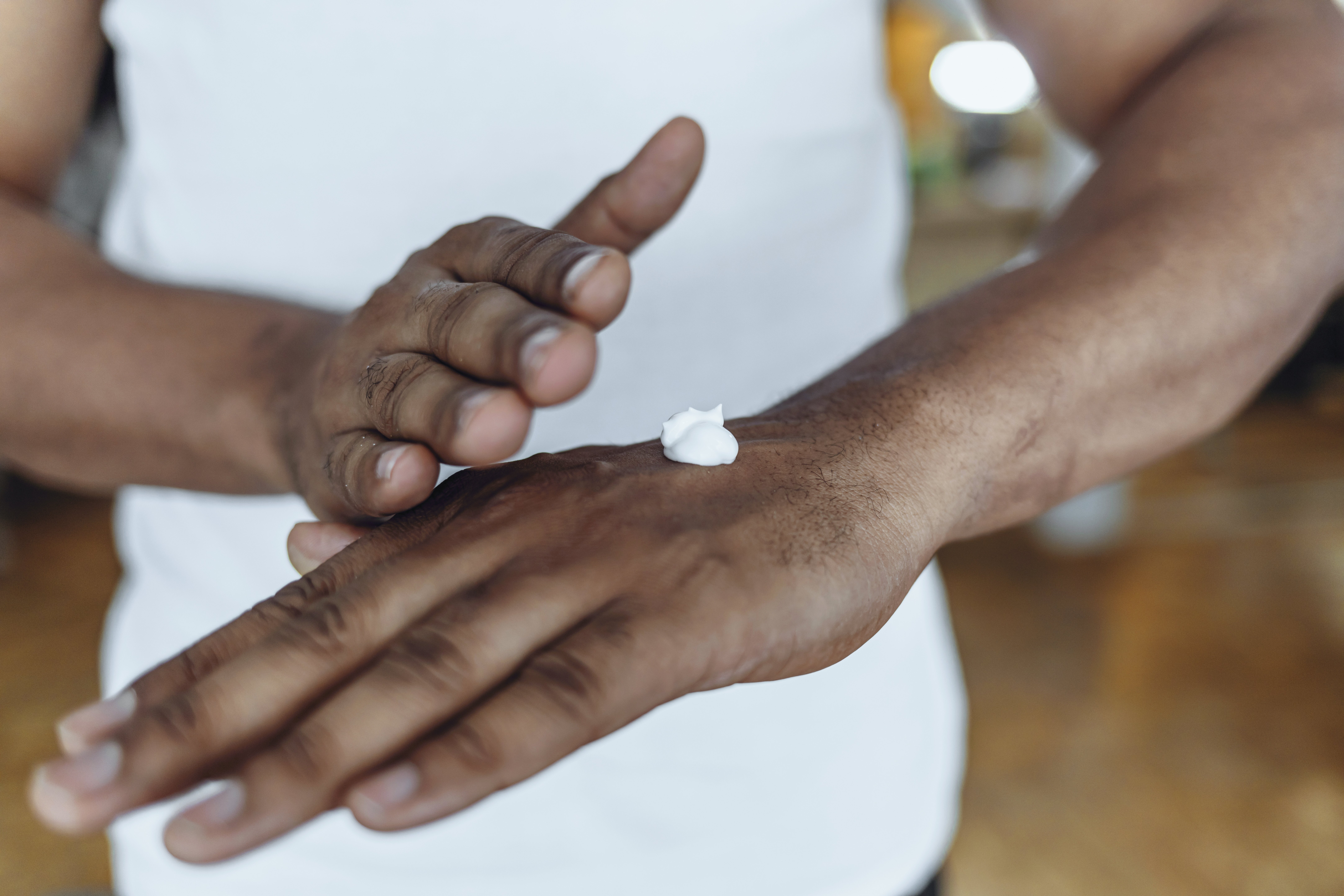
This Crew Health Advice article can be downloaded in full below. This download also includes contact details for our Crew Health team should you have any questions.
The WHO International Medical Guide for Ships* reports most cases of dermatitis seen onboard ship arise from irritation of the skin by substances that have been handled or misused. Occasionally the cause is allergy.
What is Contact Dermatitis?
Contact dermatitis is a type of eczema triggered by contact with a particular substance.
Dermatitis is the medical term for skin irritation and inflammation. Contact Dermatitis is an allergic or irritant reaction triggered by contact with a particular substance that results in a red itchy rash. The name indicates how contact between the skin and some irritating substance, or perhaps an allergic reaction to it causes this condition to develop.
The Causes
Contact dermatitis can be caused by an irritant or an allergen. It is important to differentiate between irritant contact dermatitis and allergic contact dermatitis.
- Irritant contact dermatitis is the most common type and causes inflammation from exposure to a substance that directly damages the outer layer of skin. Common irritants are soaps, bleach and detergents, solvents and regular contact with water.
- Allergic contact dermatitis – contact with a substance that causes your immune system to respond in a way that causes an allergic reaction on the skin. It can affect the area that came into contact with the allergen but may also be triggered by something that enters the body via foods, flavourings and medicines.
Common allergens include metals (like nickel), cosmetic products, chemicals or paint products, fragrances and preservatives.
Signs and Symptoms
Signs and symptoms of contact dermatitis include a red rash, itching (which may be severe), dry cracked scaly skin, bumps and blisters – sometimes with oozing and crusting. Swelling, burning or tenderness.
Symptoms may develop within minutes to hours of exposure to an irritating substance.
- Irritant contact dermatitis – the rash tends to come on quickly in response to an irritating substance.
- Allergic contact dermatitis – the body has an allergic reaction to a substance (allergen) it doesn’t like. It can sometimes take several days after exposure for a rash to develop.
Treatment
If the substance causing your contact dermatitis can be identified, and avoided, symptoms should improve and may even clear up completely.
However as this is not always possible, you may consider to consult a medical professional and then might be advised to use:
- Emollients – moisturisers applied to the skin to stop it becoming dry.
- Topical corticosteroids – steroid ointments and creams applied to the skin to relieve severe symptoms.
In severe cases, a doctor may prescribe oral corticosteroids to reduce inflammation, antihistamines to relieve itching or antibiotics to fight a bacterial infection.
Prevention
The best way to prevent contact dermatitis is to avoid contact with the allergens or irritants that cause your symptoms. However as this is not always possible general prevention steps include the following –
- Wearing protective clothing or gloves. Face masks, goggles, gloves and other protective items can shield skin from irritating substances.
- Application of a barrier cream or gel. These products can provide a protective layer for your skin.
- Using moisturiser. Regularly applying moisturising lotions can help restore your skin’s outermost layer and keep skin supple.
- Wash your skin. It may be possible to remove the allergic substance if skin is washed immediately after coming into contact with it. Use mild fragrance free soap and rinse completely.
----------------------
*Source - WHO Medical Guide for Ships apps.who.int/iris/bitstream/handle/10665/43814/9789240682313_eng.pdf




